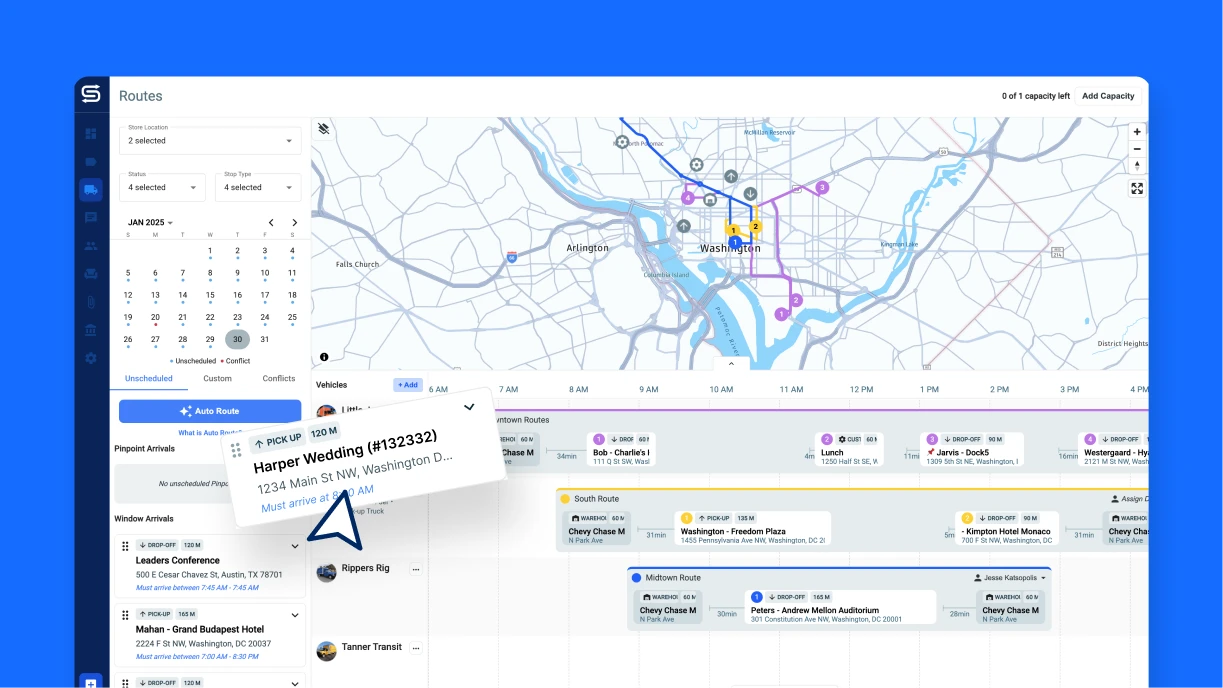Thriving event business is all about keeping people happy. At the top of that list are your clients—their satisfaction has a direct impact on your ability to garner glowing reviews, earn qualified referrals, build a base of returning clients, and ultimately, see your business grow.
Of course, client experience isn’t just about day-of results. Instead, it factors in every touchpoint, every question answered, every invoice sent, and so on. A client’s journey begins before they sign their contract and never truly ends in a perfect world. That’s because great business owners are great relationship builders, and they know the value of continuing to engage a client well after they’ve finished doing business with you.
Perfecting every single element of the client experience can seem overwhelming. You have the proposals and mood boards; you have the meetings and emails; you have the invoices and payments—multiply that by the number of clients you have (whether that’s five or 50). It truly is a lot to handle for a company to ensure every single customer is satisfied.
Fortunately, some careful attention to your internal operations can streamline your processes and elevate the client experience without investing too much time or resources.
To start, you’ll need to map out your client experience as it stands.
You can’t fix something if you don’t know how it’s broken, right? When it comes to customer satisfaction, you cannot make assumptions about your quality of service. Instead, you can only know what your past and current clients tell you about how you’re doing. A quick and easy way to do this is to look at your online reviews and testimonials to get a feel for what you do well and where you could stand to improve.
However, as you surely know, not everyone leaves a review. Most people will write a review if they’re incredibly happy with a service or incredibly disappointed, which means you might be missing some valuable insight from those who are somewhere in the middle. Consider Implementing a post-event survey or exit interview that allows you to connect directly with each and every client. Ask them about their favorite parts of working with you, as well as the areas they recommend for improvement.Take note of everything.
Then, you can use this feedback to make meaningful operational adjustments in your business.
Your clients provide an invaluable outside perspective on the good, the bad, and the ugly in your business. Take their feedback in stride, and don’t worry too much about the criticism. It can be tough to hear at first, but negative feedback is the best way to improve your business. If you’re always receiving praise and compliments, you won’t know how you can grow.
Review your client feedback for actionable changes you can make to your operational systems.If the general consensus is that your work is top-notch, but you can be hard to reach, consider testing out an instant messaging app for prompt responses or hire a virtual assistant to cull through your inbox while you’re hard at work. Perhaps you had a client who felt that they weren’t “in the loop” throughout the process— it may be a good reason to invest in a collaborative project management software to keep everyone on the same page.
When you open yourself up to feedback — both good and bad — you start to shed light on your business’s strengths and weaknesses so you can optimize the client experience for everyone who walks in the door.
Implementation isn’t the final step. Now, you need to evaluate.
You may think that putting new strategies into place is the be-all and end-all of your operational improvements. However, it can be dangerous to implement new tactics in your business without being mindful of how your clients receive them. You very well may have signed up for a new messaging app to be more prompt, but your clients could end up hating it. Maybe your fancy project management software is causing more confusion than contentment.
When you make adjustments to your operations, you must keep a close eye on the impacts on your business over the first several months. Ask existing clients how they feel about these changes. Refine the onboarding process for newly booked clients, so the transition is seamless.After a few months, you’ll have a good idea if these changes have been successful— if they are, wonderful! Keep them in place, and they’ll become second nature. If not, head back to the drawing board and look for alternative solutions. There is always an answer out there. You just need to keep looking!
Client experience will be more important than ever in 2021 as we ramp back up in a post-pandemic landscape. We will need to rebuild our clients’ trust and confidence in the industry and their plans, which may have been postponed one or more times. Keep your ear to the ground and practice active listening with your clients at all times— you never know what you’ll learn that can improve your business for good.
Feature image by Amy Kolo






